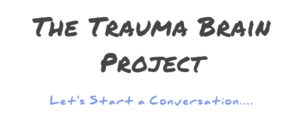Warning: This post contains discussions of “girl stuff.” You’ve been warned!
I was teaching a Yoga for Women’s Pelvic Health workshop this weekend and that always gets me on my soap-box. One of the things pelvic health educators encourage women to do is talk to each other about their pelvic health issues. So now I’m bringing the soap box to this blog! Self-disclosure is always a little risky, but I think it’s worth it if I can help just one person to realize she’s not alone. There’s so much suffering we deal with silently & alone as women that doesn’t need to be.
About 15 years ago I was diagnosed with a pelvic pain disorder. I got lucky because my nurse practitioner at the time was up to date on her female pelvic health and diagnosed me right away. That was as far as it went, however, because there was no known cause, no treatment, no cure. I say that I got lucky because many women with pelvic disorders spend a lot of time going from doctor to doctor being told “It’s all in your head” as if mental/emotional issues that may in fact be affecting their physiology aren’t “real.” The fallout of that attitude is that sometimes these issues, which can be contributing factors in pelvic pain, are rejected in favor of finding a “valid” physiological cause.
The ancient yogis knew that the mind and body aren’t separate. It’s not likely that you’ve taken your body anywhere recently and left your mind behind. (Okay, I know some people will try to argue that point!). It’s often stated in body-centered psychotherapy circles that “every thought has a corresponding sensation.” I was one of the speakers at a recent seminar on Pelvic & Abdominal Health and Trauma sponsored by Rush University Medical Center’s Program for Abdominal and Pelvic Health. It was thrilling to hear physicians acknowledge the ways traumatic life experiences can affect the body and advocate for a multi-modal approach to pelvic healthcare that includes addressing psychological factors. Times are a-changin’!
From the yogic perspective, the first chakra at the base of the pelvis develops during the 1st year of life, and affects our sense of safety and our ability to really be present in the world. The second chakra at the pubic bone develops between 6 -18months and affects creativity and sexuality. The 3rd chakra at the solar plexus develops between 18 months and 4 years and affects our self-esteem & sense of our own power. In a culture where women are objectified, sexualized, shamed and encouraged to be less than we are, is it surprising that we might experience dysfunction in these areas? According to oneinfour.com, 1 in 4 college women report experiencing some kind of sexual assault since age 14. So that number doesn’t includes girls assaulted/abused before age 14. According to webmd, “Doctors don’t really understand all the things that can cause chronic pelvic pain. So sometimes, even with a lot of testing, the cause remains a mystery.” Hmmm.
Many women are hypertonic in the pelvic floor – muscles gripping too tightly. I call it “holding on for dear life.” This could happen as the result of sexual trauma but not necessarily so. Bodies develop habits because they seem to work. Tightening the pelvic floor may give a sense of control or safety that works for the short term but becomes problematic over the long term. Some women are hypotonic – not enough strength in the muscles at the base of the body. Usually there is a lack of awareness and either state represents a weak base of support. Strengthening, stretching & relaxing the muscles of the pelvis (including the “core” transversus abdominis muscles and the pelvic floor muscles) can have a definite impact on one’s ability to feel grounded, optimistic, creative and confident.
There’s a fabulous book called The V Book that is subtitled “Your private parts shouldn’t be private to you.” We could take some of the mystery out of our own pelvic health as women just by becoming more aware. There’s another great book called “The Female Pelvis” that gives lots of exercises for developing awareness.
Overcoming vulvodynia and dealing with issues during pregnancy & delivery through mindfulness, yoga and physical therapy helped me realize that I’m one of those hypertonic folks. Somewhere in life my body figured out that when the going gets tough it’s time to hold on for dear life. Now that I’m aware of the habit, I can consciously relax muscles that shouldn’t be chronically tense. Is that “all in my head?” Um… No. It’s definitely in my body too. Mind/body connection? I’d say so.
For more information on yoga for pelvic health check out:
Leslie Howard
 I recently had the honor of being on a panel of body-centered therapists following the reading of a play by Dayle Ann Hunt titled The Trauma Brain Project.
I recently had the honor of being on a panel of body-centered therapists following the reading of a play by Dayle Ann Hunt titled The Trauma Brain Project.

 How are you feeling now? You can repeat that sequence one more time if you’re feeling a little more focused or settled than you were before you started.
How are you feeling now? You can repeat that sequence one more time if you’re feeling a little more focused or settled than you were before you started.